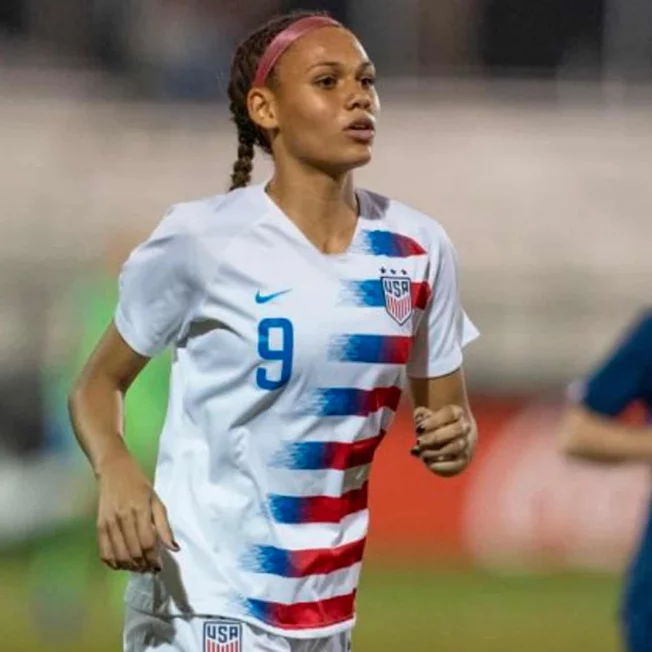For years, there has been criticism about the pay disparity between men and women in the workforce, including in professional sports. In recent years, the United States’ women’s national soccer team has been fighting to bridge the gap between their pay and their male counterparts, a fight that still proceeds to this day.
In the landscape of compensation for female athletes today, one rising star on the National Women’s Soccer League scene is making a name for herself not only with her athletic prowess but through her history-making moves. At just 19-years-old, Trinity Rodman became the NWSL’s highest-paid player at the beginning of this month, with a contract salary of $1.1 million.
Who is Trinity Rodman?
Rodman might be the daughter of former professional basketball star Dennis Rodman, but she is making a name for herself in professional sports before she’s even left her teenage years. When she was just a child, the young athlete found soccer, first playing Whenust 10. As she progressed, the young athlete found soccer through adolescence; in the Elite Clubs National League, her team had a five-year undefeated streak and took home four national championships. Her prowess continued after her high school career when she decided to take her talents to the Washington State Cougars so she could be with her brother DJ Rodman.
However, Rodman didn’t play a single match her freshman year at the university due to the pandemic and made a career pivot after year one. Instead of pursuing a collegiate career, Rodman got drafted by the Washington Spirit last January. After being chosen as the second pick in the National Women’s Soccer League, she became the youngest player to be drafted in the league. And her record-breaking moves didn’t stop there.
Even in her first season in the league, Rodman made an impact with her talent, even earning the title of NWSL Rookie of the Year last November, as well as a spot on the NWSL Team of the Year. As if that wasn’t enough, in December last year, she was also named U.S. Soccer Young Female Player of the Year, setting her up for the big start to 2022.
Then, at the beginning of the month, Rodman sealed her fate (at least for the next few years) with the Washington Spirit and signed a contract extension through 2024 that is worth $1.1 million.
Discrepancies in men’s and women’s soccer
Over the years, there has been public criticism about the pay discrepancy between men’s and women’s soccer players at the professional level, however, membership United States teams. Members of the U.S. women’s soccer team have publicly addressed the wage gap between themselves and their male counterparts in a now highly-publicized legal battle for equal pay after winning the World Cup in 2019, with 28 players part of a lawsuit against the U.S. Soccer Federation for gender discrimination and unequal pay.
But the fight for equal pay didn’t just begin then. Instead, the seed was planted three years prior in 2016 by five women’s soccer team members–Carli Lloyd, Hope Solo, Alex Morgan, Rapinoe, and Becky Sauerbrunn–who initially filed a discrimination complaint against U.S. Soccer with the Equal Employment Opportunity Commission.
In the last few years, the wage gap has become even more of a point of frustration due to the continued winning record from the women’s team on an international level while the men’s team struggles. In 2019, the women’s team won the World Cup for the fourth time. Meanwhile, the best finish for the men’s team came nearly a century ago in 1930, when they came in third. The men’s team didn’t even qualify for the World Cup in 2018, but compensation for both teams does not align.
However, after years of legal proceedings and public outcry about the pay discrepancies, progress was made last year when the USSF made the announcement that the players’ unions for the men’s and women’s national teams would be offered the same contract proposal.
“U.S. Soccer firmly believes that the best path forward for all involved, and for the future of the sport in the United States, is a single pay structure for both senior national teams,” a statement from the Federation read at the time.
And in the instances where organizations negotiate separately (this is common for international soccer programs), the women’s players association will be invited to join contract negotiations with the men’s association to promote complete transparency.




















